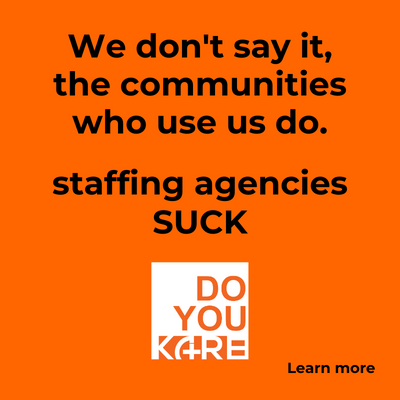It is important to identify any myths you might hold about your retirement community and those you serve.
This article was written in collaboration with guest Alan S. Wolkenstein, MSW, ACSW
As an executive director or manager of a retirement community, you likely hold specific beliefs and understandings about residents (or tenants) and the workings of the community. These understandings may be ones you have learned from others, or perhaps you have come to believe them based on your own experiences. Sometimes these beliefs can hinder growth and success.
Myths can hold us back from achieving our full potential for success. While myths exist to help us explain and make sense of our experiences, they can be, and often are, not helpful in that they simply are not true. Sometimes these traditional stories are widely held but are not based on facts. Taking our head out of the sand and taking a close look at reality can help us move forward.
Do You Hold Any of These Myths About Your Community?
It is important to identify any myths you might hold about your retirement community and those you serve. Try asking yourself if there is truth or myth in each of the following thirteen statements. Doing this exercise will put you in a more favorable position to exert constructive political, cultural or systems energy.
If you happen to recognize some of these statements as myths, you may come to realize that these untruths can inhibit the functioning of your retirement community in meeting the best needs of the residents (and families), staff and institution (bottom-line).
There is a potential for great change in the overall success of your community by focusing on challenging or debunking myths. Myths can be difficult to shed because they often come with strong emotional attachments.
Myths or Truths?
While we have developed these thirteen statements and believe this a minimal list. There may be some that have not been included that should have been. They are not mutually exclusive, but designed in a way to encourage thoughtful reflection by individuals and for discussion within the staff or team at your retirement community.
Consider these thirteen statements and decide if these statements are myths or truths when it comes to your community:
-
Our residents are a priority, and our retirement community has all the amenities, staff and services the residents need for enhancing their quality of life.
-
We understand that older adults who have chosen to come to our community may or may not have completed and successfully coped with their “Family Life Cycle” tasks (such as launching adult children, retirement, widowhood, accepting bodily changes and dealing with the realities of their living arrangements), eliminated their intra-familial conflicts and made all important amends. They may or may not be emotionally and psychologically prepared to handle potential losses, grief experiences and transformation.
-
Our retirement community adopts a holistic approach to care and has fully trained and specialized staff to identify, assess, treat and monitor the physical, emotional, psychological, cultural and spiritual needs of our residents. Administrative personnel and managers are up-to-date on the resources available and continuously strive for improvements in this area.
-
Residents are properly screened and/or assessed by qualified personnel for anxiety, depression, mood and thought disorders and mental status (including Alzheimer’s disease and related dementias).
-
There is an active involvement with families and social/cultural communities of residents for continuity of attitudes, values and belief systems. In addition, all elders need connections with their significant others and our retirement community fosters and encourages these relationships.
-
Administrators, managers and select staff are encouraged and trained to provide continuing adult education programming and support within our community to individuals and families in troubled elder-parent and adult-children relationships.
-
Our retirement community welcomes and embraces the roles of residents’ advocates and an ombudsman in the holistic and total care concept of our residents.
-
Our retirement community has sufficient and ongoing staff training opportunities, supervision and evaluation of all appropriate staff.
-
If present, frequent staff turnover is vigorously addressed. We believe a disjointed or fragmented system can lead to a less than viable milieu for residents and staff morale. We strive for continuity and consistency. Satisfied staff leads to satisfied residents.
-
Administrative personnel have a clear understanding of and methodology to deal effectively with staff burnout or impairments (permanent or temporary).
-
Our retirement community has a Human Resource Department that is staffed with (or has access to) professional mental health personnel: those who can identify, assess, and refer for proper treatment (or other actions) staff who are troubled, deficient, show signs of burnout and impairment, and those in violation of local, state, federal and institutional laws and guidelines.
-
Our retirement community understands and encourages interagency cooperation within our communities.
-
Our retirement community interacts with educational and academic resources to foster community public awareness and psychosocial services for older adults within our community. This includes placement, internships and fieldwork for learners in the field of geriatrics and mental health services. All such learners are supervised and guided by specialists in eldercare from appropriate professions within the institution.
No retirement community consciously chooses to deny services to their residents and staff, but may be acting only from a strong and important fiscal basis. However, this is insufficient. Boards and executive directors may be very good at their roles, but not sufficiently trained to assess the holistic need of their residents and staff.
Your Score and What To Do About It
If you answered “Myth” to any of the above statements, then an action plan for remediation and change may be essential.
This action plan may include:
-
an examination of policy and procedures
-
reassessment of priorities
-
modification of scarce resources
-
finding and securing new funding to change some specific myths to truths
-
a review of long-range goals and objectives
Achieving Gold Standard
We believe when a system is primarily profit and profit-margin motivated, it will not survive in difficult and challenging times.
It is a truth that a society is best measured by how it cares for its very young and very old. Let your retirement community be the gold standard of care for its residents and their families. Maybe now is the time to secure and support consultation to reach new visions for your retirement community.
Alan S. Wolkenstein, MSW, ACSW, Clinical Professor of Family Medicine (Ret.), University of Wisconsin School of Medicine and Public Health, Wolkenstein and Associates, LLC, Mequon, Wisconsin, 53092, [email protected], Angela G. Gentile, MSW, RSW, Specialist in Aging ¹ Wolkenstein, A. S., Lawrence, S. L., & Butler, D. J. (1985). Teaching “family”: The Family Medicine Chart Review. Family Systems Medicine, 3(2), 171-178. Angela G. Gentile MSW, RSW. is a clinical social worker and author of the book, “Caring for a Husband with Dementia: The Ultimate Survival Guide”, “A Book About Burnout: One Social Worker’s Tale of Survival” and the “Dementia Caregiver Solutions” app for iPhone and iPad. She lives in Winnipeg, Manitoba with her husband and two adult children. She is passionate about all things related to Aging Well. For more information, visit: www.AngelaGGentile.com








